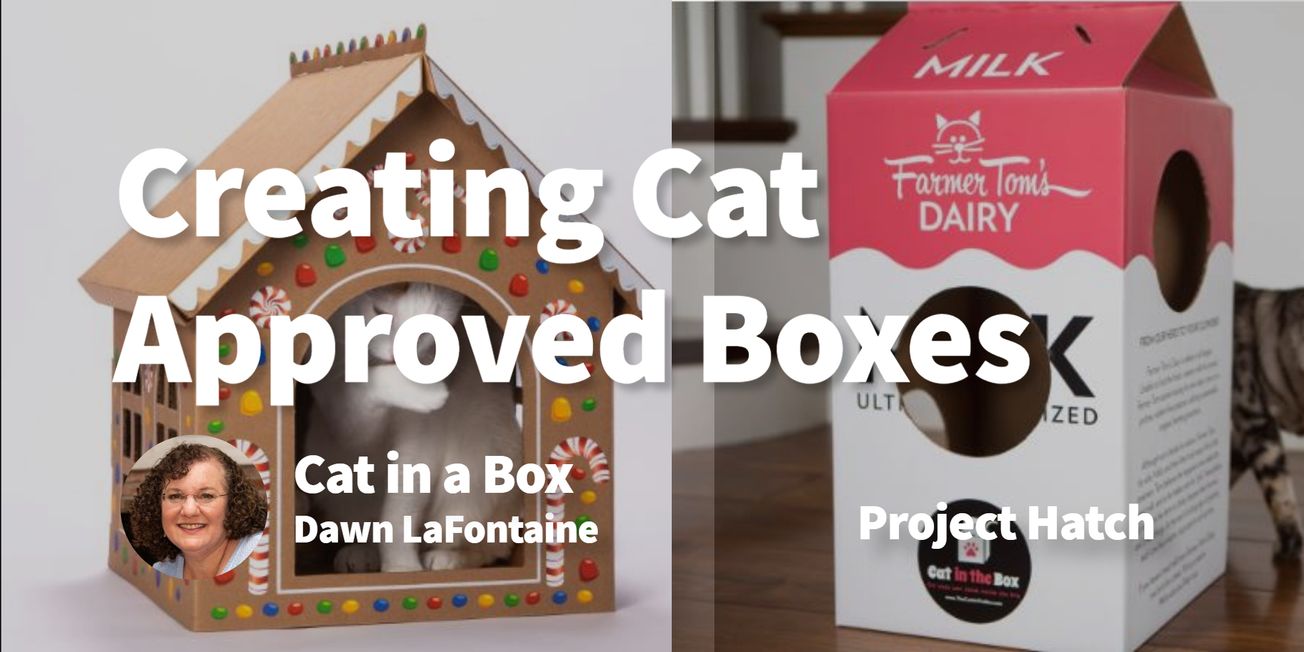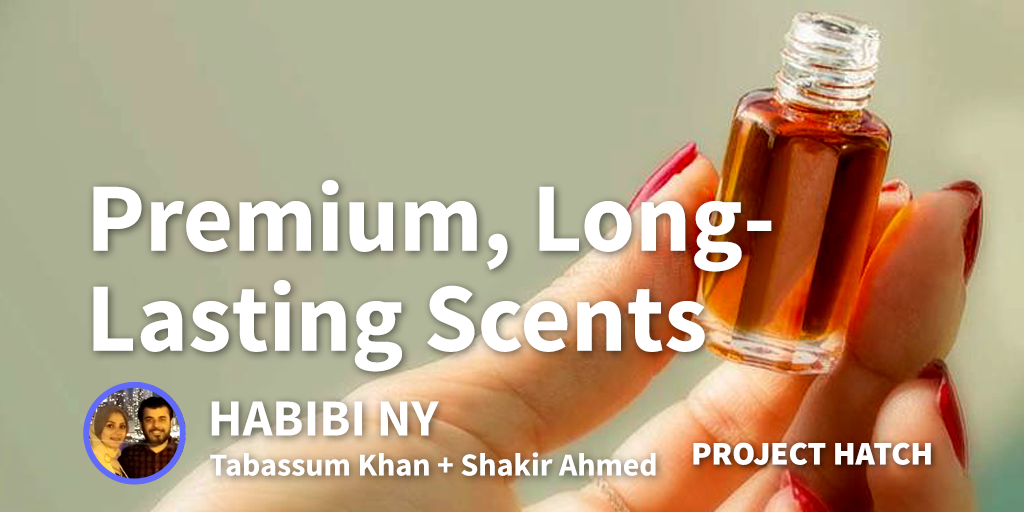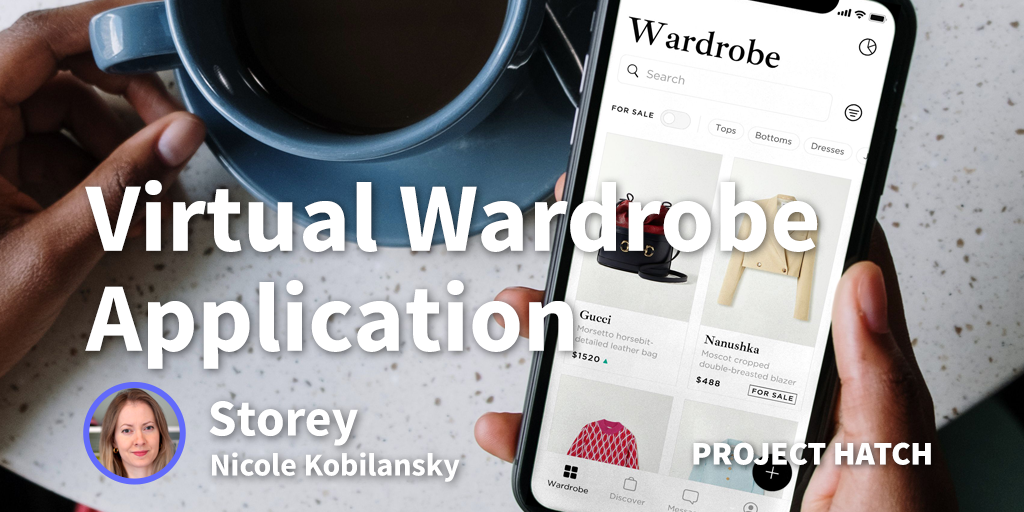Cats are obsessed with cardboard boxes. Anyone who has spent even 5 minutes with a housecat knows this. Google “cats in cardboard boxes videos” and you’ll get over 16 million hits. It is such a strange and universal phenomenon that researchers around the world have studied cats and their penchant for cardboard. It turns out that there is some serious science to explain why cats love cardboard boxes so gosh darn much.
Most cat owners are unaware of the science, but want to meet their pets’ needs. If my Instagram feed is any indication, most cat owners have a stash of dirty Amazon boxes lying around their house for their cat’s enjoyment.
I got the idea for Cat in the Box after helping my mother drop her cats off with her catsitter. The woman obviously cared about home decor, but her living room was oddly filled with cardboard boxes. She saw me looking around and explained, somewhat sheepishly, “they’re for the cats.”
I already knew that cats love cardboard boxes, but it got me thinking. Why do cat owners put up with dirty, ugly shipping cartons in their homes? Why not meet both cat owners needs with boxes that are fun, cat-safe, and attractive?
I’m a lifelong animal lover. My household has always contained a menagerie of all things furred, feathered, and finned. My family and I also have a long history as volunteers in animal rescue causes. When my kids were small we began spending summers volunteering for a rescue that rehabilitates former racing greyhounds. We regularly fostered litters of baby rats for a unique small-animal rescue. I currently volunteer every week in a cat shelter and am a proud foster mom to orphaned kittens.
All along, I’ve always designed things for the animals in my care when I couldn’t find what I was looking for in the store, whether it was a fleece-covered “pigloo” for our chilly guinea pigs in winter, or a sweater for our 160 lb great Dane when I couldn’t find one large enough for her in the big-box shops.
Who is your target demographic?
My customers are people who love their cats and care about the products they touch, lick, and chew. My boxes are unique in that they are made in the USA using human-grade soy inks. There are some competitive products on the market now but these are made elsewhere, using unknown and possibly dangerous inks. Cats are notorious for not only snuggling inside cardboard boxes, but for gnawing on them, too. I’m a label-reader when it comes to my pets and my customers are the kind of people who care about the same things that I care about.
My products are also unique in that they are made of corrugated cardboard. Competitive products are typically made using paperboard, which is easier to shape than corrugated. However, science points to a cat’s need for acorrugatedproduct, which is a great insulator and helps keep cats warm. My products not only meet a cat’s need for a clean, safe, corrugated box, but an owner’s desire for an attractive “conversation piece” in their home. I’m able to accomplish this without resorting to paperboard, or to manufacturing in China.
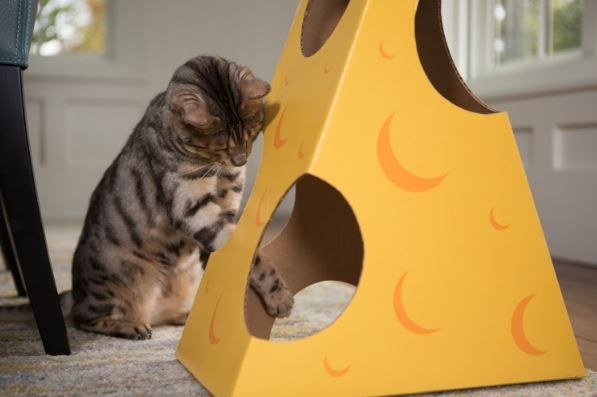
My products are clever and I get all kinds of special requests from customers. One of my products is designed to look like a giant milk carton and I’ve had a request from a parent planning a kids’ milk-and-cookie-themed birthday party for a special kid-not-cat-oriented design. Unfortunately, the designs themselves are complicated and require expensive custom cutting dies and printing plates for manufacture -- not the kind of thing that can be one-offed.
I’ve had customers tell me that they use my boxes for other pets, like rabbits and guinea pigs, and I even had one person tell me that she was using my Gingerloaf House, a gingerbread house kit, for her child’s Elf on the Shelf.
How did you fund the idea initially?
I got the seed money to start this business from the severance my husband received when he was laid-off from a long-time job. Talk about making lemonade out of lemons!
I’m still a solopreneur, and a complete bootstrapper, who wears every hat in the business. I do everything from bookkeeping, to product design, to emptying the waste-paper baskets. I still pack every box that every customer has ever received.
What motivated you to start your own business?
I am not your typical entrepreneur. I’m a middle-aged, former stay-at-home mom who hadn’t held a traditional job in almost 25 years. Before deciding to stay home to raise my kids, I was the big earner in the family. In the intervening years I’d watched my husband grow in his career and I realized, when the kids finally left home, that I didn’t have another 25 years left in my working life to achieve what he had.
What sealed the deal for me was applying for two part-time positions while my husband was laid off. I was over-qualified for both positions, but didn’t get a call back from either one. That experience convinced me that I need to take control of my own working future.
I didn’t tell anyone -- not friends, nor family -- about my plans for almost a year. I’ve heard this from other entrepreneurs: that sometimes the people closest to them were not as supportive as they would have hoped for. I definitely think my family was surprised that after “not working” for so many years I would choose this uncertain, “risky” path.
Do you have any advice for someone just starting out?
I'd offer three pieces of advice to newcomers to the world of ecommerce:
- Don't reinvent the wheel. Even though ecommerce is a relatively new way of conducting business, there are others who have gone before you and know the way. I have sought out mentors in the entrepreneurial world, and specifically in ecommerce, who have been invaluable to me on this path.
- Hard work doesn't necessarily lead to success, but it leads you somewhere. Unless you have a crystal ball, you never know how an endeavor like this is going to turn out. You can do all the research, dot the I's and cross the T's, and your product or business idea can still flop. Know what it's going to cost you - both financially and personally - if it goes sideways. Know where to be a real bootstrapper: where you can make do, where you can be agile, where you can DIY, and where you absolutely can NOT cut corners. And then go with it. Whatever happens takes you down a path, and you don't know where that path is going to eventually lead -- and it might not be where you originally thought.
- The idea isn't the thing. When I first got the idea to start a business, I thought the main thing was the "idea." Now I know it's not about the idea as much as it is about the implementation. Implementation is the thing that's hard to learn. But once you learn it, the information is yours to keep forever and to apply to other ideas and other endeavors.
What is stopping Cat in the Box from being 3X the size it is now? The same thing that probably stops everyone: money. With money I could invest in more box designs, warehouse space to house product, advertising to sell more, and employees to help pack and ship it all.
How do you protect yourself from competition?
I don’t think I can protect myself from competition. Somebody can always design a box. What I can do to better insulate myself from future competition, is continue to build a community of cat lovers through social channels -- something that the traditional Amazon seller, or big-box seller is not necessarily doing. It’s not only good for business, it’s good for me. I love connecting with so many like-minded animal lovers every day of my life.
I took a step back to reevaluate my product line in 2019 after the USPS dramatically changed postal rates which made shipping my oversized-but-light products unprofitable. I spent most of 2019 redesigning my next product to make it lighter and more compact, and yet still sturdy enough for cats. The Gingerloaf House was the result of those efforts. It's a seasonal product and it came off the manufacturing line only a few weeks before Christmas. I was selling at a rate of approximately $2000/week during that brief time period.
I've taken the lessons from that experience to my newest product. I'm finalizing packaging now and it should be available on Amazon and some boutique pet stores sometime in the next several weeks.
What are the top 3-5 apps that Cat in a Box could not run without?
I’m not a huge app user. I keep things simple. But Cat in the Box could not exist without email marketing. I’m currently using Omnisend, which meets all of my needs. For me to be able to be able to develop a genuine relationship with my audience -- not just selling to them every time I reach out -- I have to be providing content that they value. I couldn’t do that without Omnisend. Cat owners love learning more about their beloved pets and I enjoy being able to address some of their questions through in-depth blog posts which are disseminated to my audience through email.
What are your favourite books and podcasts?
I recently read Building a Storybrand by Donald Miller, at the suggestion of one of my mentors, Scott Voelker of The Amazing Seller. It’s a unique guide to a new way of talking about your business with customers.
My three favorite business podcasts include the one hosted by Voelker, as well as My Wife Quit Her Job by Steve Chou, and EcomCrew by Mike Jackness. I walk away from every single episode with takeaways that I can apply to my business immediately.
What are your next steps?
I’m excited about expanding my offerings. The success of my Gingerloaf House, a gingerbread house kit for cats and their humans, which sold out in about 3 weeks, cued me in that cat lovers enjoy seasonal or holiday-themed products for their cats. My Breezy Beach Cottage just got back from the manufacturer: it’s an adorable little house that cat owners can decorate with beach-themed (and cat-safe) stickers, including seashells and starfish, and a “Life is Better at the Beach” sign. I’ve got another clever idea in the works for Halloween, too.
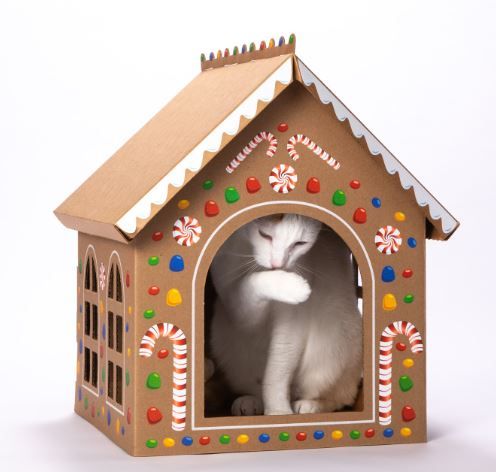
In 5 years, I hope to have a full spate of unique cat toys. Anyone who goes shopping for their cats knows that most cat toys on the market today are low-quality and generic. I think cats and their people deserve better!
Anybody who says they wouldn’t sell their business just hasn’t gotten an offer yet. ;)
| Company Name: | Cat in a Box |
|---|---|
| Founder: | Dawn LaFontaine |

